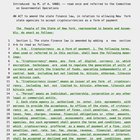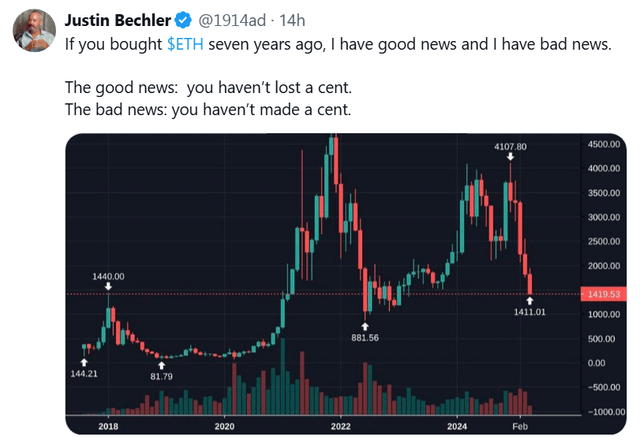Fed’s Kashkari hints at liquidity support — Is $100K Bitcoin back on the table?
Neel Kashkari, President of the Minneapolis Federal Reserve, addressed the issue of rising Treasury yields on April 11, suggesting that they might indicate a shift in investor sentiment away from United States government debt. Kashkari highlighted that the Federal Reserve has tools to provide more liquidity if necessary.While underscoring the importance of maintaining a strong commitment to reducing inflation, Kashkari’s remarks signal a possible turning point for Bitcoin (BTC) investors amid growing economic uncertainty. US Treasury 10-year yields. Source: TradingView / CointelegraphThe current 10-year US government bond yield of 4.5% is not unusual. Even if it approaches 5%, a level last seen in October 2023, this does not necessarily mean investors have lost confidence in the Treasury’s ability to meet its debt obligations. For example, gold prices only surpassed $2,000 in late November 2023, after yields had already decreased to 4.5%.Will the Fed inject liquidity, and is this positive for Bitcoin?Rising Treasury yields often signal concerns about inflation or economic uncertainty. This is crucial for Bitcoin traders because higher yields tend to make fixed-income investments more appealing. However, if these rising yields are perceived as a sign of deeper systemic issues—such as waning confidence in government fiscal policies—investors may turn to alternative hedges like Bitcoin.Bitcoin/USD (left) vs. M2 global money supply. Source: BitcoinCounterFlowBitcoin’s trajectory will largely depend on how the Federal Reserve responds. Liquidity injection strategies typically boost Bitcoin prices while allowing higher yields could increase borrowing costs for businesses and consumers, potentially slowing economic growth and negatively impacting Bitcoin’s price in the short term.One strategy the Federal Reserve could use is purchasing long-term Treasurys to reduce yields. To offset the liquidity added through bond purchases, the Fed might simultaneously conduct reverse repos—borrowing cash from banks overnight in exchange for securities. A weak US dollar and banking risks could pump Bitcoin priceWhile this approach could temporarily stabilize yields, aggressive bond purchases might signal desperation to control rates. Such a signal could raise concerns about the Fed’s ability to manage inflation effectively. These concerns often weaken confidence in the dollar’s purchasing power and may push investors toward Bitcoin as a hedge.Another potential strategy involves providing low-interest loans through the discount window to give banks immediate liquidity, reducing their need to sell long-term bonds. To counterbalance this liquidity injection, the Fed could impose stricter collateral requirements, such as valuing pledged bonds at 90% of their market price.Systemic risk in the US financial services industry. Source: Cleveland FedThis alternative approach limits banks’ access to cash while ensuring borrowed funds remain tied to collateralized loans. However, if collateral requirements are too restrictive, banks might struggle to obtain sufficient liquidity even with access to discount window loans. Related: Bitcoiners’ ‘bullish impulse’ on recession may be premature: 10x ResearchAlthough it is too early to predict which path the Fed will take, given the recent weakness in the US dollar alongside a 4.5% Treasury yield, investors might not place full trust in the Fed’s actions. Instead, they may turn to safe-haven assets such as gold or Bitcoin for protection.Ultimately, rather than focusing solely on the US Dollar Index (DXY) or the US 10-year Treasury yield, traders should pay closer attention to systemic risks in financial markets and the spreads on corporate bonds. As these indicators rise, confidence in the traditional financial systems weakens, potentially setting the stage for Bitcoin to reclaim the psychological $100,000 price level.This article is for general information purposes and is not intended to be and should not be taken as legal or investment advice. The views, thoughts, and opinions expressed here are the author’s alone and do not necessarily reflect or represent the views and opinions of Cointelegraph.








